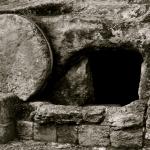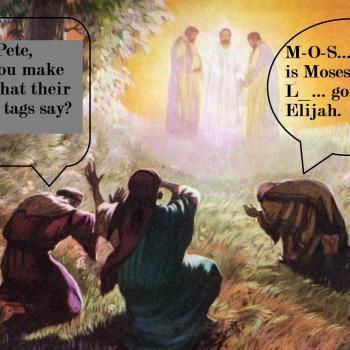The subject of Jesus’ burial is one that most readers of this blog know interests me. Hopefully you also know that my little book The Burial of Jesus: What Does History Have To Do With Faith? is not just about the burial of Jesus, but engages specifically with the historical questions related to the rise of belief in the resurrection, and the inability of myself and anyone else in our time to use historical tools to decisively pronounce about “what really happened” to the body of Jesus after his death. In other words, it is an Easter book and not merely a late Good Friday or a Holy Saturday book.
That said, I do think that the traditions and historical questions about the burial of Jesus are interesting and important in their own right, and not only in relation to what happened thereafter.
I’ve been engaging scholars like Bart Ehrman who disagree with my own viewpoint for a number of years now. Matthew Ferguson has also entered the fray, interacting with Ehrman and Magness (among others). Bart Ehrman has also engaged with the issue on his blog, in addition to in books.
More recently, Mark Smith had an article published in The Bible and Interpretation that interacts with the claim of Bart Ehrman and others that the Romans normally prevented the burial of victims of crucifixion. He writes:
Josephus…provides more evidence of Roman executions of Jews than any other author. In his Jewish War, in the early stages of the revolt, Josephus discusses the turmoil in Jerusalem where Idumaeans, allied with Jewish Zealots, engaged in widespread slaughter of those who opposed them, including the chief priests, whose bodies they “threw out” without burial. Josephus, disgusted by this behavior, comments: “…Jews have so much regard for funeral rites that even malefactors who are justly crucified are taken down and buried before sunset” (Jewish War 4.317). Since only Romans had the authority to crucify, Josephus is referring to his knowledge of normal Roman practice, in deference to Jewish culture. This evidence is particularly illuminating when taken together with Deuteronomy, the Temple Scroll, the Gospel of John, and Philo. All concur that the executed, even the crucified, must be properly buried by sunset. Josephus and Philo further concur that Romans regularly honored this Jewish expectation. As we have seen, Josephus did not hesitate to describe the many victims of crucifixion before the walls of Jerusalem whose bodies were probably exposed on crosses. Here he seems to be drawing an important distinction between ordinary executions, and the extraordinary ones that took place in a context of war.
And in conclusion:
[E]very historical narrative of execution followed by non-burial took place in a violent context. Conversely, over the course of two centuries, we do not have evidence of a single case of corpse abuse or exposure of executed bodies under peaceful circumstances, save for the few victims of the sack wending their way down the Tiber. Therefore, we can draw an important conclusion: Non-burial of the victims of capital punishment may happen in a context of violence, but burial is far more probable in a context of peace.
Do read the rest of Smith’s article – and see my book on this topic for more from me on the subject!















